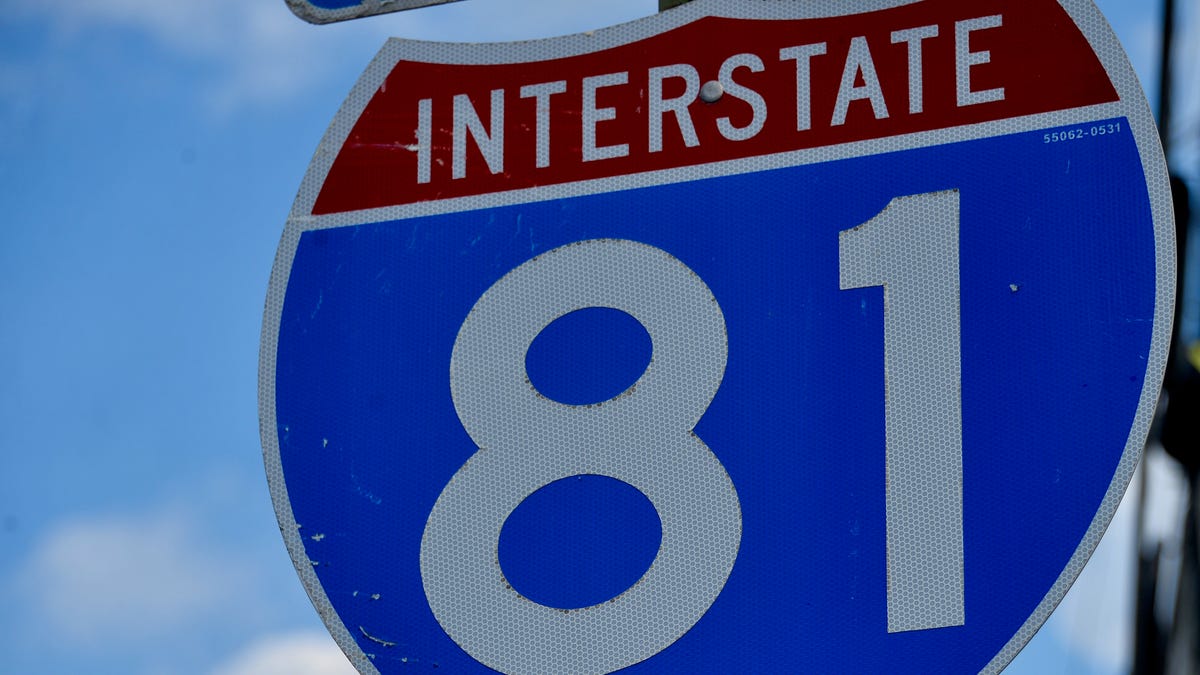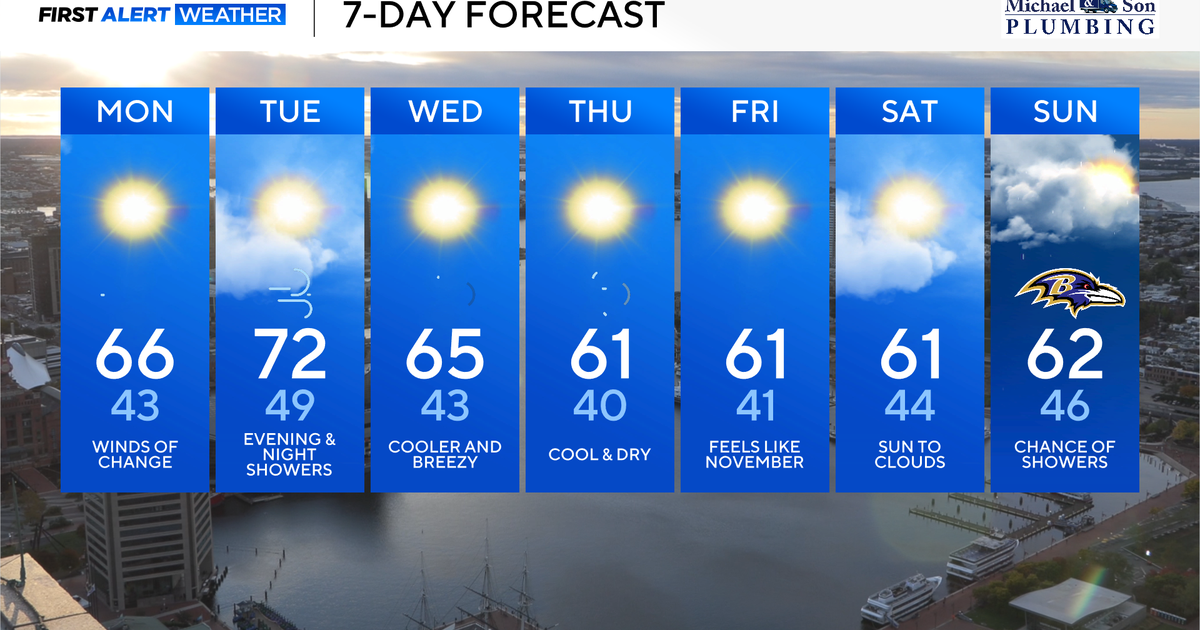Maryland’s Interstate 81 widening project to be split into more phases
Maryland State Highway Administrator William Pines talks Oct. 9, 2025, about the need to split phase two of widening I-81 in Washington County.
- The second phase of widening Interstate 81 in Washington County, Maryland, will be split into two parts to keep the project on schedule.
- Construction for Phase 2A is expected to begin in 2027, with Phase 2B starting in 2028, due to delays in negotiating stormwater management with CSX.
- The project will add a third lane in each direction, replace bridge structures, and install noise barriers and new traffic signs.
- Sen. Mike McKay urges drivers to pay attention to the road rather than their phones.
The next phase of widening Interstate 81 in Washington County, phase two, will be split into two phases to help keep the project on track, said Administrator William Pines with the Maryland State Highway Administration.
Phase 2A construction is anticipated to start in 2027, Pines said. That will involve widening I-81 to six lanes from Md. 63/Md. 68 (Lappans Road) to Interstate 70. Construction for Phase 2B, from I-70 to north of Halfway Boulevard, is expected to start in 2028. Work on both will overlap.
Pines said the decision this past summer to split phase two into two parts is due to stormwater management issues because talks with CSX haven’t gone well regarding getting right-of-way for stormwater ponds at the north end of Phase 2.
Rather than delay the entire project, state highway officials decided to break Phase 2 into two parts to keep the overall schedule on track and allow for more time to negotiate with CSX, he said.
Project officials are now looking at alternatives such as constructing underground storage tanks along the corridor to handle the additional volume of stormwater from widening I-81, Pines said. There also might be other places stormwater ponds could be built.
Widening I-81 not only creates more impervious space for stormwater runoff, but that runoff occurs faster with that volume, Pines said.
Pines provided an update on the I-81 widening project during an Oct. 9 meeting Maryland Department of Transportation officials had with local officials regarding state projects and transportation issues in Washington County. The meeting was held at the Washington County Public Safety Training Center south of Hagerstown.
The meeting was part of the transportation department’s fall tour to local jurisdictions to discuss the department’s draft $21.5 billion, six-year capital budget.
The department’s final FY 2026-2031 Consolidated Transportation Program, the capital budget, will come out in January.
State lawmakers will consider the plan as part of the state budget process, including formally approving fiscal year 2026-2027, and likely discussing longer term projects.
Pines said adding underground stormwater structures will add to the Phase 2 I-81 project cost.
The anticipated total estimated cost for Phase two has already gone up from $99 million, as of this past spring, to $107.8 million due to additional design expenses and a revised construction estimate, according to the state’s draft capital budget.
Guide to 2025 Mummers Parade: What’s new with the big Hagerstown Mummers Parade?
What’s included in Phase 2 widening of I-81 in Western Maryland?
Phase 2 of the widening project adds one lane in each direction to create three northbound and three southbound lanes.
The project also includes creating two noise barriers, similar to the walls seen along Interstate 95.
One of the noise barriers is proposed along northbound I-81 near Tammany Manor, according to a project diagram on the state’s project website for Phase 2. Tammany Manor is south of the I-81/I-70 interchange.
The other proposed noise barrier is along southbound I-81 near Lakeside Village in Halfway.
The plan for Phase 2 also includes new overhead traffic signs, including dynamic messaging signs, which can provide real-time information. The stretch of I-81 in Washington County currently has one dynamic messaging sign in the area of Showalter Road.
Most of widening Phase 2’s almost 4 miles will occur by using the current median area, according to the project website.
The project also includes replacing bridge structures over the CSX railroad tracks north of Halfway Boulevard.
Hagerstown-area transit update: Washington County buses to end early for Mummers Parade Oct. 25
What about widening the rest of I-81?
Local officials at the Oct. 9 meeting also asked about Phases 3 and 4, which would be needed to complete the widening of I-81 to the Pennsylvania state line.
While the draft capital plan has a project page for completing the last 7.2 miles of I-81 to the Pennsylvania state line, there is no future funding listed for those parts of the project through fiscal year 2031.
Washington County Commissioners Vice President Jeff Cline and State Sen. Paul Corderman, R-Washington/Frederick, talked about the need to improve I-81 for safety and for the local economy.
Corderman referred to crash data he received from the Washington County Division of Emergency Services regarding the total number of accidents to which fire and law enforcement officials had responded. The data included all accidents, including those with injury and/or property damage.
The rate of crashes along the county’s 12 miles of I-81 is on pace to reach 452 this year with 339 as of data shared on Oct. 8. There were 458 crashes in 2024 and 390 in 2023.
The rate of accidents on the county’s 38 miles of I-70 was on pace to reach 884 this year, with 663 as of the Oct. 8 data report. There were 760 crashes in 2024 and 690 in 2023.
Cline said delays on I-81 or I-70 can cost economic losses of hundreds of thousands of dollars for the community.
Corderman and Cline referred to recent crashes on both interstates.
On Thursday, Sept. 25, a Falling Waters, West Virginia, woman was pronounced dead after a three-vehicle crash on I-81 near Williamsport that involved two tractor-trailers and a passenger car.
That stretch of northbound I-81 was closed for more than 12 hours while authorities conducted a crash investigation, according to Maryland State Police. The preliminary investigation indicates a FedEx tractor-trailer hit the car as the car was slowing down for traffic, state police have said.
State police responded around 11:25 p.m. on Tuesday, Oct. 7, to the single-vehicle crash of a tractor-trailer hauling lettuce on eastbound I-70 near Saint Paul Road. No one was transported for injuries, according to state police.
That stretch of I-70 didn’t fully reopen until around 5 p.m. the next day, Oct. 8, according to state police.
When crashes close one of the interstates it leads to congestion not only to local roads in the immediate area, but to the broader area, officials have said.
Oct. 21 blood drive: Hagerstown’s safety center to host blood drive to support emergency care
Sen. McKay cautions about distracted driving
Speaking generally, Sen. Mike McKay, R-Washington/Allegany/Garrett, held up a cellphone during the meeting and said, “I think this is going to be the death of our community.”
Drivers are paying more attention to their phones than to the road, McKay said.
He urged community members to “show a little grace and respect to the other drivers that are on the road. Pay attention. Pay attention to what you’re doing,” McKay said.
He said he’s just as guilty as the next person.
Pines said officials need to work together on the education front when it comes to driver behavior.
With interstate projects, state highway has been including work zone and speed safety cameras to encourage drivers to slow down, he said.
“Unfortunately, we still have a lot of people that area speeding at very excessive rates. Those types of things lead to crashes and unfortunately, really this is about driver behavior a lot of the time,” Pines said.
Pines raised the issue when discussing the lane closures along I-70 near Saint Paul Road, noting that design adjustments were being made. Work recently began to replace two I-70 bridges there.









































